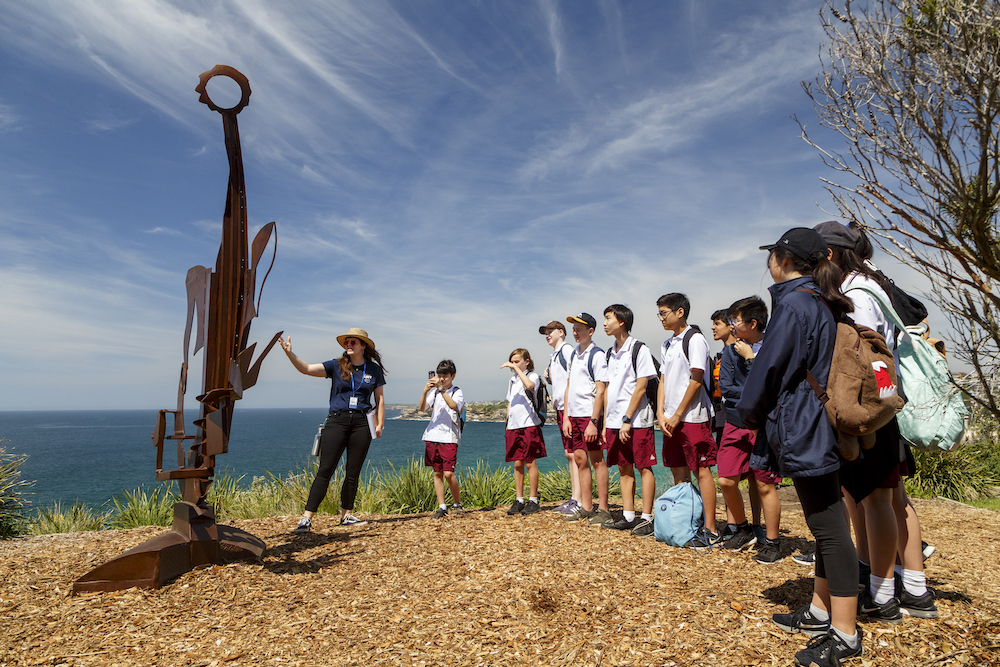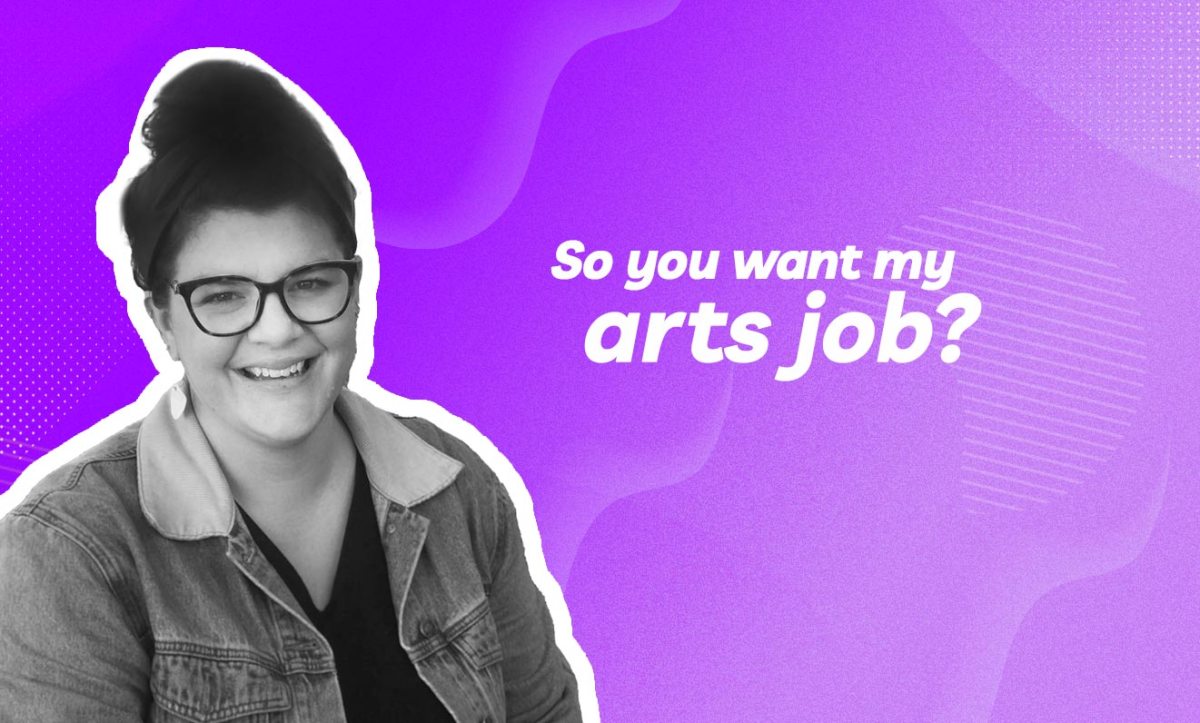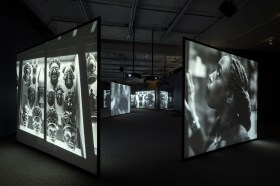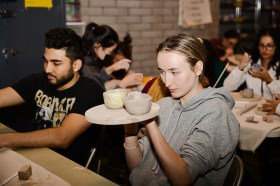Meghan Kennedy is the Education, Access and Inclusion Program Manager for Sculpture by the Sea, an annual festival staged in picturesque and popular settings. It can prove challenging at times.
But the upside is that it is a dynamic, fast-paced role, rewarding for its connection with audiences and – for a bonus – often takes you outdoors.
Kennedy is currently working on the forthcoming event for Bondi Beach (Sydney), which opens next month. She has been with Sculpture by the Sea (SXS) for four years and was also involved in the recent creation of the Snowy Valleys Sculpture Trail in regional Australia. She has been a site technician for events such as Adelaide Fringe and Sydney Festival.
ArtsHub caught up with Kennedy to find out what it takes to do this job, and to drill down on what its challenges – and benefits – are.
How would you describe what you do to your parents?
I connect disadvantaged school students with practicing artists and provide hands on programs where young people learn from professional sculptors throughout regional Australia.
I also get to provide access to people of all ages with disability to experience world-class sculpture at beautiful coastal locations that, ordinarily, can be extremely challenging to access for diverse audiences.
What qualifications do you need for this job?
A range! I have a degree in Sculpture and Installation that really provides the backbone for the programs I produce, and I have years of experience in events and galleries creating programs and managing teams.
While I am not a qualified teacher, I have worked with many for several years which allows me to enough understanding of the curriculum to tailor our programs to support educators.
My background as an artist allows me to keep our school and access programs grounded in the creative process rather than just providing education programs that fit in with the syllabus only.
How did you get your start in this career? What was your first job?
I first started in this career when I was 18, working at a tiny regional art gallery while commuting crazy distances and studying sculpture in Sydney. I worked in the office, filled paperwork and helped set up the painting exhibitions in the space. At the time I worked a whole lot of different jobs in the arts and in hospitality.
Then I began working as a site technician and installer for various galleries and arts festivals and events and this led me to casual artist educator positions with various arts festivals, including Sculpture by the Sea.
It was a combination of lots of grunt work and many, many years of running teams for different festivals and hospitality venues. It really gave me a great understanding of back end of sculpture exhibitions and managing teams of people, educators and artists alike.
How collaborative is this job?
Mostly, very collaborative. All of the programs are facilitated by exhibiting artists, and so the programs are based around their own practice and processes.
It is great fun collaborating with artists to create education programs, and I work alongside a team of curators, site engineers, marketing professionals and designers who all add a lot of scope and colour to the programs offered throughout our exhibitions.
What’s an average week like?
Lots of paperwork and scheduling most of the time. It can be fairly unexciting at times in our exhibition off-season. There’s loads of email correspondence and risk management. But I get to make trips throughout the year into regional NSW and Western Australia to schools to provide programs, and that is hugely satisfying and exciting.
A few months out of exhibition (like now), it really starts to ramp up to another level. There’s a buzz and anxiousness that you get in events that can be really energising, and there’s a huge amount of adrenaline during a big show and program. That’s always a great challenge and it can be extremely fun.

What’s the most common misconception about your job?
That it requires you to be a teacher. I am not. But I do have a passion for bringing art to the people, and making it physically and emotionally accessible, and I think that brings an authenticity to our programs.
There is no specific training that can prepare you for roles like this. It’s a combination of experience, skillset and willingness to go with the flow – and sometimes the chaos – that comes with working for large scale exhibitions.
Kids are amazing, as are the diverse audiences that visit our exhibitions and it’s so much fun to provide programs for them and the artists.
It’s like fusing the art world and the education world?
The artists who facilitate our programs always come out with the eye-opening experiences of watching people engage with their processes – what, to the average punter, is the mystical world of the professional artist.
How competitive is this job?
I would say very. I don’t see many come up. It is often a right place, right time opportunity.
Working for festivals and art organisations casually is always the best way to receive opportunities like this, one of the best assets you can have is experience with the organisation. That goes a long way.
In an interview for your job, what skills or qualities would you be looking for?
Relevant tertiary qualifications in Visual Arts, Arts and/or Education; a passion for accessibility and disadvantaged young people; attention to detail and a flexible personality!
Excellent organisational skills and experience in planning and delivering programs; experience working in a visual arts event, museum, gallery or festival environment; experience working with people with disability, and an understanding of and commitment to advocate their interests and requirements.
It often comes down to the right personality. Being organised but also very flexible is an unusual combination and being adept at handling the stress that comes with large scale events is essential.
What’s changing in your professional area today?
Of course, the online landscape. Repositioning so that you can move your programs online at the last moment when needed, and the ability to work remotely. It is wonderful that it is possible, but it requires learned skills.
What’s the most interesting thing that’s happened to you in this job?
Getting to work with bushfire-affected schools and communities to develop the early stages of a permanent sculpture trail, which has now launched as the Snowy Valleys Sculpture Trail. It was a hugely rewarding process to meet with people and hear their stories, garner support and then apply for bushfire relief funding to help rebuild tourism in the Snowy Valleys.
They are a traumatised community. They were devastated by the Black Summer Bushfires and then quickly forgotten by the media due to the pandemic and subsequent floods. Being a part of the very early stages of the idea, and then working for two years until phase one of the launch was SO exciting.
It was amazing to see the idea come to fruition and see now that it is financially benefiting the region while supporting the arts industry in Australia.
The 24th edition of Sculpture by the Sea, Bondi will be presented from 21 October – 7 November 2022. Check out the education and public programs Kennedy and the SXS team have curated.





